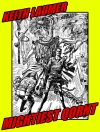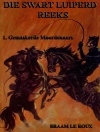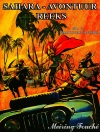Includes The New York Times article on the obituary Wells wrote for himself in 1936, ten years before his death, and a detailed biographical timeline.
In Victorian England a gentleman inventor identified simply as the Time Traveller tells a dinner tale of his journey to 802, 701 A.D. where the world is populated by the peaceful if apathetic Eloi, a society of childlike adults, and the brutal tunnel-dwelling Morlocks. After a harrowing escape and witnessing horrific futuristic landscapes he returns to the present day where he has been away for only three hours. His incredulous listeners are speechless when the Time Traveller produces proof of his journey. With this slender yet fully realized work of imagination Wells created a colossal classic of enduring fascination.
The Warbler Classics edition pairs The Time Machine with Wells’ short story “The Star.” As a burning star hurdles through space on a collision course with Earth, the warnings of scientists fail to arouse public alarm—even while flooding, earthquakes, intense heat, and melting ice caps due to climate change cause massive havoc.
Mục lục
THE TIME MACHINE
I.
II.
III .
IV.
V.
VI.
VII .
VIII.
IX .
X.
XI .
XII.
Epilogue.
THE STAR
‘H. G. Wells Writes His Own Obituary’
Biographical Timeline
Giới thiệu về tác giả
H. G. Wells (1866-1946) was an English writer of novels, short stories, history, social criticism, satire, biography, and autobiography. With Jules Verne, he is considered the ‘father of science fiction.’ He envisioned such things as time travel, alien invasion, invisibility, biological engineering, and cosmic threats long before they existed or were conceived of by others. In addition to enjoying popular success, Wells was nominated for the Nobel Prize in Literature four times. He died in London, England, on August 13, 1946 at the age of seventy-nine.












